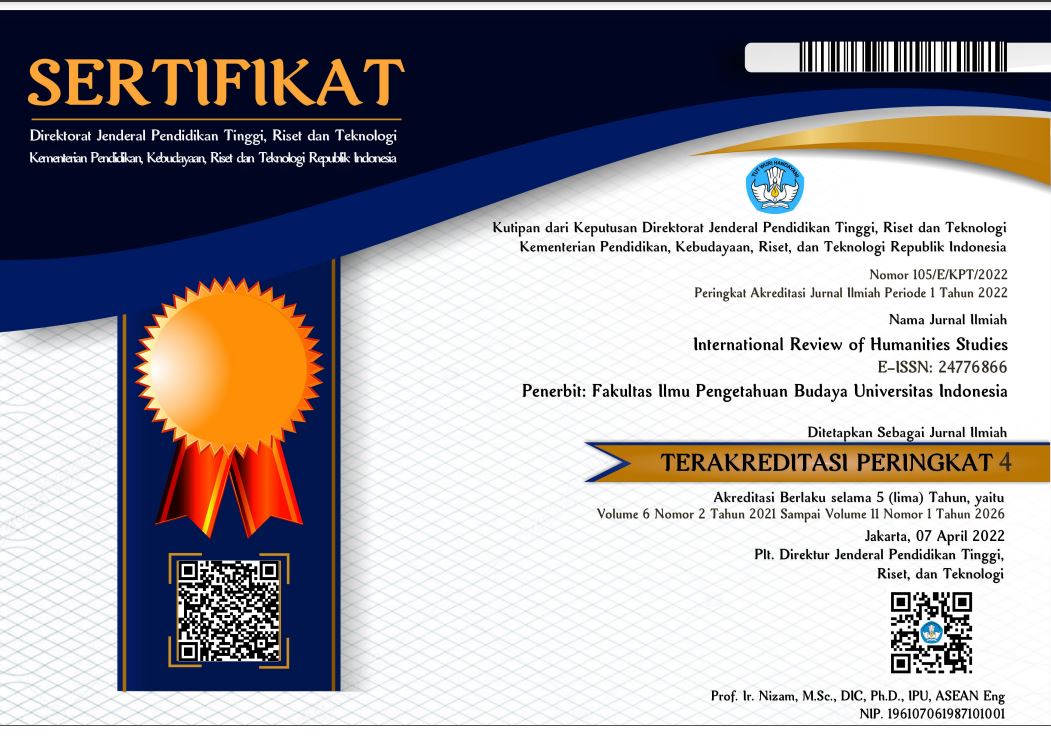International Review of Humanities Studies

Abstract
Animation is one of the flagship products of creative industry which grow rapidly, under Bekraf (Indonesian Creative Economy Board) film, animation, and video sub sector. The high quantity of animation production in Indonesia can be shown through several animation projects which currently still in production stage or already circulated, whether in the form of serialization for TV or in the form of movie on silver screen. Therefore, the study of animation made in Indonesia nowadays is needed more than before. As an art form, animation is also a media that can be deconstructed for each of its aspect, historically, socially, theoretically, and critically. Animation in its visual form is using various element and technique that common in visual media design. This technique historically can be look down to past media that already used before the advent of animation. One of the important visual elements of animation film is visual character element. Visual character is an embodiment of characterization from the scenario. The embodiment done through the design of visual character that made to facilitate the movement in order to make audience understand the story. Character design and its movement in animation through the detail planning must be able to show its personality. In order to show it, the designer uses various technique and methods such as: acting and expression which achieved through character visualization of gesture, movement, voice and other form of body language. Many form of that character visual expression not only used for delivering the story but also to convey meaning to audience. One of the popular genres of animation made in Indonesia is a fairytale (dongeng) animation. Fairytale animation derives its story from folklore (cerita rakyat) of Indonesia. Though it is a misconception the folklore is considered as children friendly story therefore deemed appropriate to be used as animation story for children. One of the popular folklore or fairytale stories that often adapted for animation is Timun Mas story. This animation character gesture study hopefully can be considered as the way to enriching the study of animation as media in Indonesia and in
References
Bancroft, Tom (2012), Character Mentor. Waltham: Focal Press
Chauduri, Parag and Prem Kalra, Subhashis Banarjee (2007), View-Dependent Character Animation , New Delhi: Springer
Giesen, Rolf and Anna Khan (2018), Acting and Character Animation The Art of Animated Films, Acting and Visualizing. Boca Raton: CRC Press
Goldberg, Eric (2008), Character Animation Crash Course. Los Angeles: Silman-James Press.
Karsono, H Saputra (2010) Jumantara (Jurnal Manuskrip Nusantara) Vol. 01 No.1 Tahun 2010 Jakarta : Perpustakaan Nasional
Lee, Stan and John Buscema (1977), How to Draw Comics The Marvel Way New York: Simon & Schuster Inc.
Robert, Steve (2011), Character Animation Fundamentals Developing Skills for 2D and 3D Character Animation, Waltham: Focal Press
Thomas, Frank and Ollie Jhonston (1981) The Illusion of Life Disney Animation, New York: Walt Disney Prouction
Witkam, Jan Just (2007) Inventory of The Oriental Manuscripts Of The Library Of The University of Leiden Volume 1. Leiden: Ter Lugt Press
Recommended Citation
Amboro, Yudi and Adityayoga, Adityayoga
(2020)
"CHARACTER GESTURE COMPARISON ON TIMUN MAS ANIMATION MADE BY DRS SUYADI AND TIMUN MAS ANIMATION MADE BY BENING STUDIO,"
International Review of Humanities Studies: Vol. 5:
No.
3, Article 14.
Available at:
https://scholarhub.ui.ac.id/irhs/vol5/iss3/14
Included in
Architecture Commons, Arts and Humanities Commons, Social and Behavioral Sciences Commons


